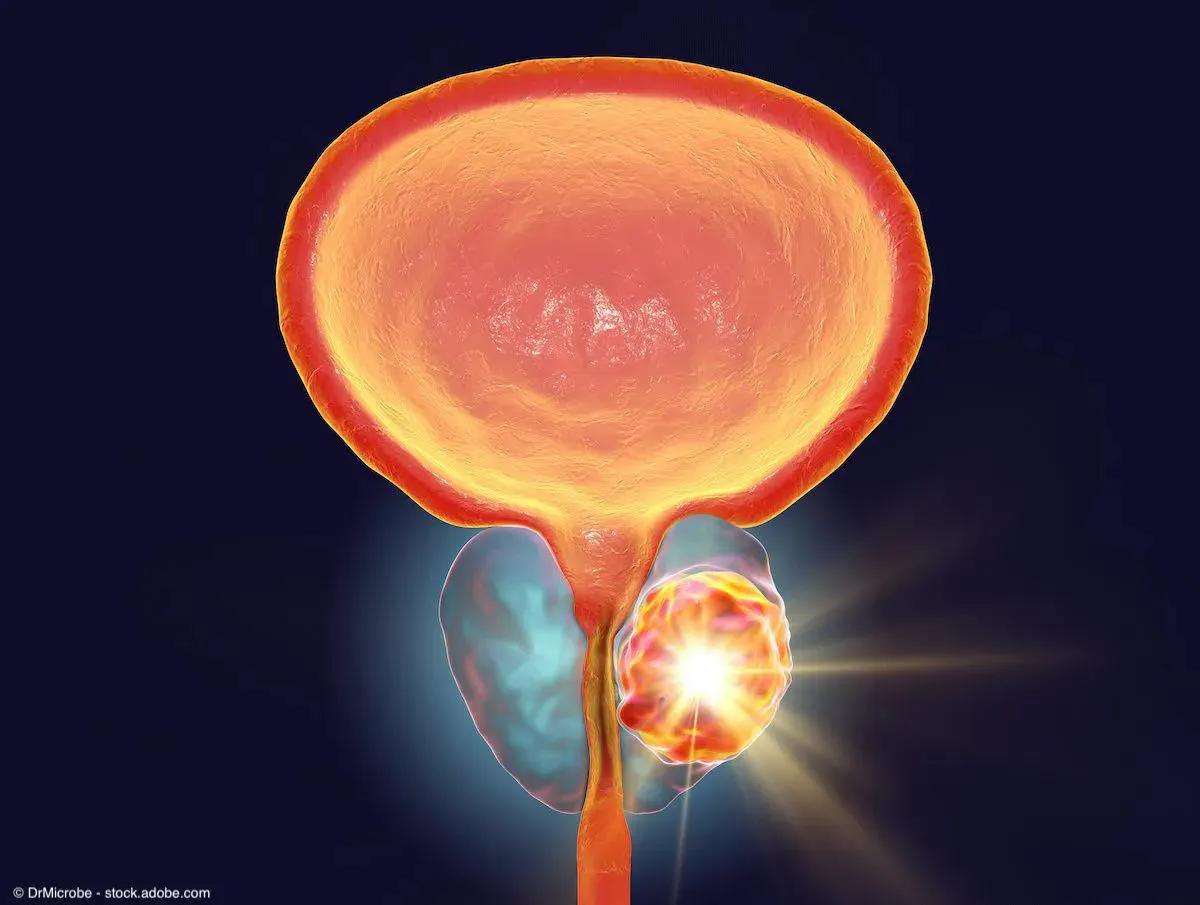News
Article
Expanded label sought for 177Lu-PSMA-617 in prostate cancer
Author(s):
The expanded label for 177Lu-PSMA-617 would include patients with mCRPC in the pre-taxane-based chemotherapy setting.
Novartis has announced plans to file for an expanded label of 177Lu-PSMA-617 (lutetium Lu 177 vipivotide tetraxetan; Pluvicto) to include patients with metastatic castration-resistant prostate cancer (mCRPC) in the pre-taxane-based chemotherapy setting following additional positive data from the phase 3 PSMAfore study (NCT04689828).1,2
The company plans to file for the label expansion of 177Lu-PSMA-617 in the second half of 2024.

Currently, 177Lu-PSMA-617 is indicated for use in the treatment of adult patients with mCRPC who have received prior treatment with an androgen receptor pathway inhibitor (ARPI) and taxane-based chemotherapy.3
Updated data from the PSMAfore study showed that overall survival (OS) from a pre-planned analysis at approximately 75% information fraction demonstrated a hazard ratio of less than 1 in the intent-to-treat (ITT) population, unadjusted for cross-over.1 At the time of initial data report from PSMAfore in 2023, the unadjusted ITT OS analysis was confounded, with 84% of patients who discontinued treatment with ARPI due to radiographic progression crossing over to receive 177Lu-PSMA-617.
In the updated data report, Novartis noted that radiographic progression-free survival (rPFS) and other key secondary end points were consistent with data reported in 2023, as well as the safety profile for 177Lu-PSMA-617, which included an additional 8 months of follow-up.
In October 2023, Novartis published data from the PSMAfore trial showing superior rPFS with 177Lu-PSMA-617 compared with an ARPI in patients with PSMA-positive mCRPC who had progressed on a previous ARPI and had not received treatment with taxane-based regimen.4
Overall, the trial met its primary end point by showing that 177Lu-PSMA-617 more than doubled the median rPFS to 12.0 months, compared to 5.6 months among patients who received a change in ARPI (HR, 0.41; 95% CI, 0.29, 0.56; P < .0001).
Data also showed that a PSA decline of at least 50% was more than 2.5 times more frequent with 177Lu-PSMA-617 than with a change in ARPI. Specifically, a PSA decline greater than 50% was observed in 57.6% of patients who received 177Lu-PSMA-617, vs 20.4% of patients who received a change in ARPI.
Additionally, patients who received 177Lu-PSMA-617 demonstrated improved quality of life, with their FACT-P total score maintained for 7.5 months vs 4.3 months among those with a change in ARPI. Further, the delay in worsening pain score was maintained with 177Lu-PSMA-617 for 5.0 months vs 3.7 months with a change in ARPI.
Grade 3 to 4 adverse events (AEs) were reported in 33.9% of patients who received 177Lu-PSMA-617, and 43.1% of patients who received a change in ARPI. Serious AEs were observed among 20.3% of patients in the 177Lu-PSMA-617 arm and 28.0% of patients who received a change in ARPI.
AEs leading to a dose adjustment were experienced by 3.5% of patients in the 177Lu-PSMA-617 cohort and 15.1% of patients in the change in ARPI cohort, and AEs leading to treatment discontinuation occurred in 5.7% and 5.2% of patients, respectively.
The most common AEs among those who received 177Lu-PSMA-617 were primarily grade 1 and 2 and included dry mouth (57.3%), asthenia (31.7%), nausea (31.3%), anemia (24.2%) and fatigue (22.9%).
In total, the open-label, phase 3 PSMAfore study included 469 patients with PSMA-positive mCRPC who had not received treatment with a taxane-based regimen.Those included in the study had tumors that had progressed on a second-generation ARPI (either abiraterone, enzalutamide, darolutamide or apalutamide).
Patients were randomly assigned 1:1 to receive 177Lu-PSMA-617 or a change in ARPI. Those in the change in ARPI cohort were able to cross over to receive 177Lu-PSMA-617 after experiencing radiographic progression as confirmed by blinded independent central review.
According to Novartis, full results from the PSMAfore trial will be presenting at an upcoming medical congress. The company plans to file for the label expansion of 177Lu-PSMA-617 in the second half of 2024.
References:
1. Novartis confirms plans to file for Pluvicto pre-taxane label expansion in H2 2024 based on latest data from phase III PSMAfore study. News release. Novartis. April 4, 2024. Accessed April 5, 2024. https://www.novartis.com/news/novartis-confirms-plans-file-pluvicto-pre-taxane-label-expansion-h2-2024-based-latest-data-from-phase-iii-psmafore-study
2. Novartis to file for Pluvicto label expansion after promising phase III data. Published online and accessed April 5, 2024. https://www.biospace.com/article/novartis-to-file-for-pluvicto-label-expansion-after-promising-phase-iii-data/
3. Novartis Pluvicto approved by FDA as first targeted radioligand therapy for treatment of progressive, PSMA positive metastatic castration-resistant prostate cancer. News release. Novartis. March 23, 2022. Accessed April 5, 2024. https://www.novartis.com/news/media-releases/novartis-pluvictotm-approved-fda-first-targeted-radioligand-therapy-treatment-progressive-psma-positive-metastatic-castration-resistant-prostate-cancer
4. Novartis Pluvicto shows clinically meaningful and highly statistically significant rPFS benefit in patients with PSMA-positive metastatic castration-resistant prostate cancer in the pre-taxane setting. News release. October 23, 2023. Accessed April 5, 2024. https://www.novartis.com/news/media-releases/novartis-pluvictotm-shows-clinically-meaningful-and-highly-statistically-significant-rpfs-benefit-patients-psma-positive-metastatic-castration-resistant-prostate-cancer-pre-taxane-setting















